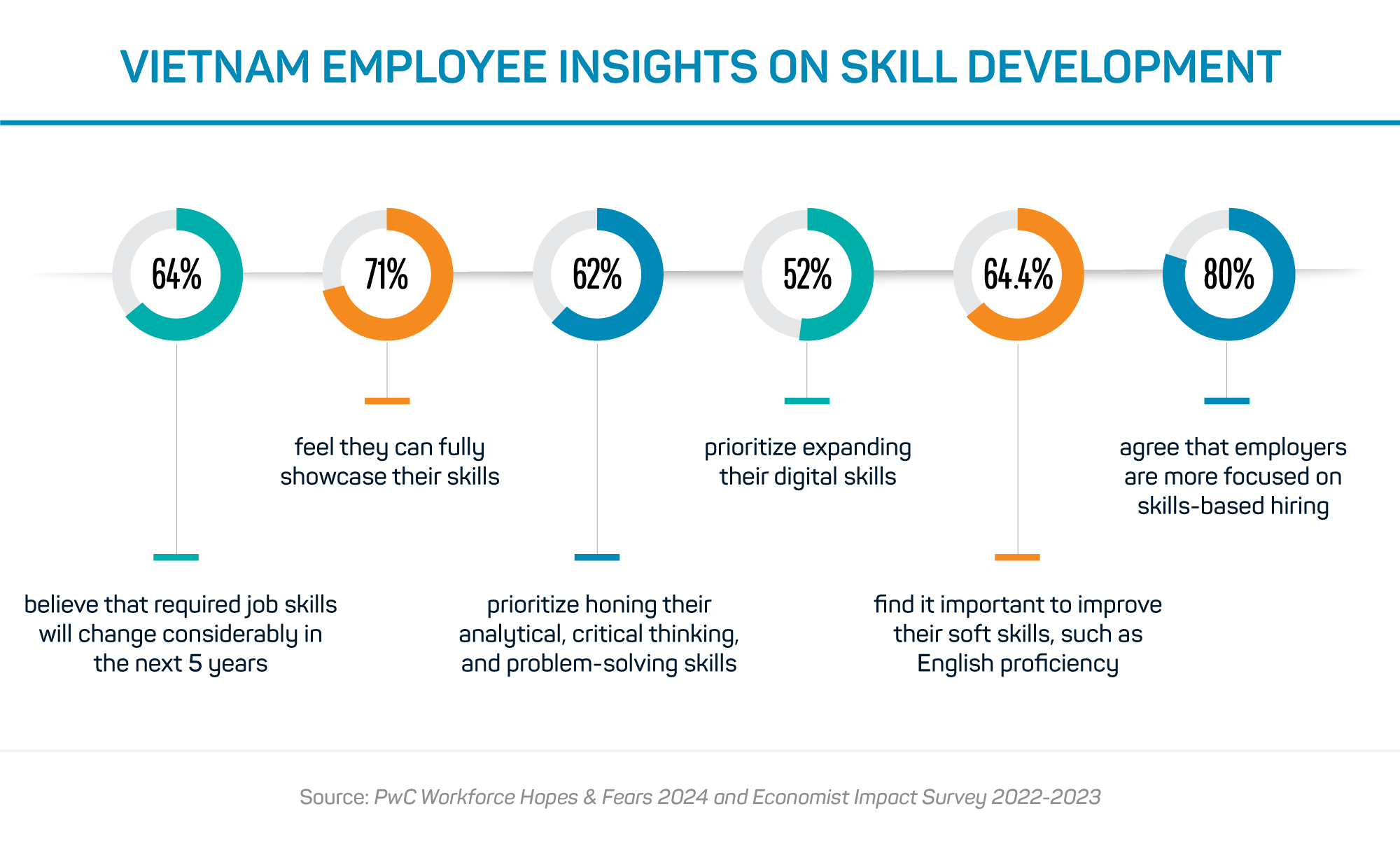
Top 10 Strategies for Employee Training and Development in Vietnam
The Vietnamese government has been proactive in developing talent to meet the evolving global demands for a skilled labour force. Aimed at strengthening the country’s talent pool, the National Strategy on Attracting and Applying Talent (2023) focuses on developing expertise in science and technology, information and communication education, medicine, culture, and social sciences.
This is aligned with Vietnam’s trends on the workforce’s desire to enhance their skills, leading to improvements in employment opportunities and economic standing.
Employers can do their part in supporting the government’s initiative by providing training and development programs for their staff. It should cover both technical and soft skills training to help employees become more successful in their roles and in other fields of interest. These programs can be conducted through team workshops, individual coaching, academic training, industry seminars, job shadowing, online learning, and internships, among others.
Here are ten proven strategies that will help you to plan and implement learning and development programs for your employees.
1. Assess areas for improvement
Find out which skills your staff are interested in learning and review your current training program. This will also give you a clearer picture on which aspects of your business need improvement. Determine also what would be the best way to conduct your training sessions. Some can be facilitated through online meetings or onsite for better interaction.
2. Define your goals and objectives
Make sure the objectives of your learning program are aligned to the goals of your business. Ask yourself: Is the training relevant to their roles? What are the takeaways that your employees will gain from this? How will this training support your business? How will you sustain their continuous development? Bear in mind budget and time considerations as well to help you manage your expectations.
3. Outline the program
Creating a detailed outline will help you stay on track. Include the objectives of the program, who are the prospective attendees, what will be covered in the training, presentation materials to be used, location, schedule, and expectations from the program.
4. Choose the trainer
Who will conduct the session? Would you prefer an in-house employee who will be trained to facilitate it, or would you rather outsource this to a professional corporate trainer? Whichever you choose, make sure that the facilitator has the necessary skills and expertise to provide a well-organised, engaging, and informative learning experience.
5. Offer diverse topics
Provide a variety of topics so employees can focus on the training sessions where they can apply new knowledge directly to their roles and improve their performance. Set clear expectations and objectives for the training and explain how it will benefit each employee’s work.
6. Create engaging content and activities
To encourage active participation, ensure that the training content will keep your audience engaged. This will also help them take the lessons they’ve learned to heart. In your presentation, use interactive tools, relevant case studies, relatable situations, and role-playing activities.
7. Review the results regularly
Check if the employees have a comprehensive understanding of what they’ve learned. You can assess this by giving short tests during the training or conduct a practical test where they can apply their newfound skills. Make sure your team values your training program as an investment in their development so they can take responsibility for their learning.
8. Get feedback
A key aspect of any successful learning and development program is a feedback loop. Gathering input from participants on how well the training worked for them and where improvements can be made will allow you to optimise future programs.
9. Support with follow-ups
As the saying goes, “Learning never ends.” This holds true for any training program. Having follow-up sessions will help support your employees for their continuous improvement so they can fully integrate and apply the skills and knowledge learned through the training.
10. Recognise their efforts
Acknowledge the participants for their time and commitment in joining the training program. This adds value to their experience and promotes a culture of learning. This can be done by awarding them with certificates of achievement, acknowledging their progress during team discussions, or giving small incentives for their efforts.
ASW Consulting: Your reliable recruitment consultant in Vietnam
Providing extensive learning and development opportunities for your employees is a strategic investment for your staff and for your business growth. As a trusted headhunter company in Vietnam, ASW Consulting provides HR advisory services along with our talent acquisition expertise to ensure that your company will always have a robust and highly skilled workforce.
Visit our recruitment agency in Ho Chi Minh City and our talent consultants will be happy to help you. Contact us today for more information about our recruitment services, workforce management, and employment opportunities.
Related blogs:
Top 10 Tips for Managing Workplace Conflict Effectively





